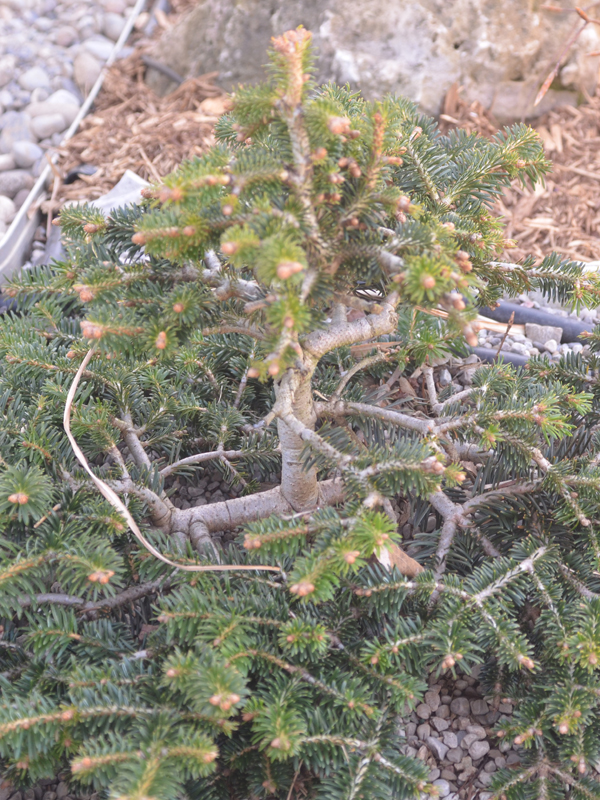| Shape | Broadly pyramidal.
|
| Cultivation | Responds well to shearing and hence its use and potential as a Christmas tree. It tolerates dry soils but is intolerant of heavy soils, plant in full sun.
|
| Pests | It is a species that is reported to be resistant to Phytophthora root rot however seedlings are susceptible to Phytopthora cactorum. Deer tend to be attracted to its foliage. Armillaria mellea, Armillaria gallica, Dioryctria abietara, Fusarium sp., Formes annosus, Heterobasidion annosum, Polyporus fulvus, Trametes radiciperda and Trichosphaeria parasitica are all potential fungal pathogens. |
| Habitat | Humid bio-climates, in mixed stands at elevations up to 2,500 m, on granite in the Uludag Mountains. |
| Flower/Leaf Bud Description | The buds are resinous and generally break in mid-May in its native range. |
| Leaf Description | Glabrous branchlets with dark, rich green needles adaxil but being bright silver abaxil. |
| Flower Description | The tree is monoecious and wind pollinated. |
| Fruit Description | The cones ripen in one year with a heavy seed crop produced every 3 - 5 years, they are up to 15 cm long and are dull grey in colour turning to light brown when mature. |
